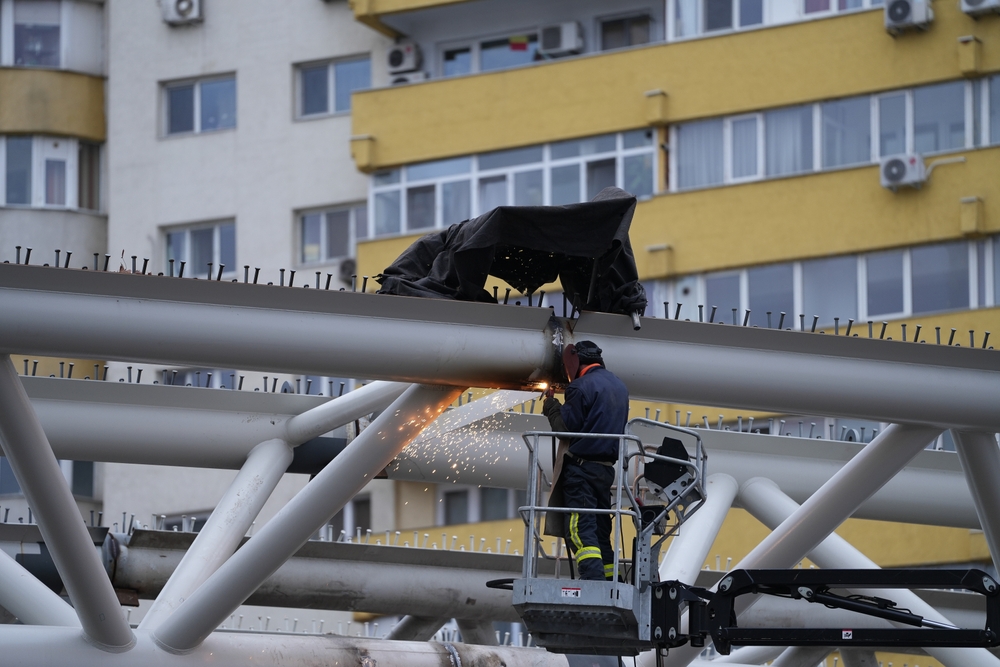
Bucharest, Romania. Construction of a bridge January © Cristi Dangeorge/Shutterstock
1.8 million projects carried out by over 600,000 entities thanks to the EU cohesion policy. Who managed this myriad of initiatives, and on which areas and subjects were resources concentrated? A look at the data from the Kohesio platform
Over 1.8 million projects financed across the European Union, for a total of over 600,000 direct beneficiaries: the Kohesio online platform – made available by the European Commission in the spring of this year – finally aggregates the information relating to the enormous mass of initiatives and investments supported by the EU through its cohesion policy, making it easier to explore this data.
Cohesion policy follows seven-year cycles: Kohesio currently includes projects financed in the period 2014-2020 through the European Regional Development Fund , the Cohesion Fund , and the European Social Fund . These are 1,841,210 projects, plus a few more supported by territorial cooperation programmes. For each of these projects, Kohesio specifies the objectives pursued, the expenditure incurred, and the direct beneficiary of the financing (i.e. the body or company that received and managed the money, often to contract or purchase goods in turn and services from other entities).
Some national specificities
Kohesio currently lists 605,714 beneficiaries. Their geographic distribution and the number and size of projects they have managed vary greatly. In recent years, some beneficiaries have managed EU funds worth billions of Euros, others have received a few hundred Euros. Some beneficiaries have managed hundreds of projects, many just one. Dividing the projects by country, some national specificities can be noted:
Italy is the second member state that received the most resources from the EU cohesion policy in the period 2014-2020, but it is by far the first European country in terms of number of projects: over 740,000 different projects, i.e. approximately 40% of all projects funded by the EU in those years. The other major beneficiaries of cohesion policy – Poland and Spain – have concentrated the resources received on a much smaller number of initiatives, less than a fifth of those presented by the Italian State, Regions, and local authorities.
Carrying out a greater number of projects does not necessarily mean attracting or investing a greater amount of funds. Indeed, looking at the average value of projects financed by the EU in the various member states, Italy is the country with one of the lowest values, i.e. on average €79,000 for each project. At the opposite end, for example, we find Romania, where each project was able to count on average 3.2 million Euros.
The number of direct beneficiaries of EU funds also varies greatly from country to country. For example, in Germany the number of projects was less than half that in Italy, but the number of beneficiaries was greater. Italy actually stands out in Europe for the exceptionally high number of projects managed on average by each beneficiary, i.e. 8.2 projects; in the majority of other countries this value is between 2 and 3 projects.
Who are the beneficiaries?
Cohesion policy projects are carried out by a variety of different subjects: central state bodies, subsidiary companies, regions and local authorities, private companies, universities, third sector bodies, and so on. In the 2014-2020 period, EU cohesion policy pursued five macro-objectives: making Europe "smarter", greener, closer to citizens, more connected, and promoting "social Europe". These objectives were then expressed in concrete ways by the various governments and territories.
The following table collects the three largest beneficiaries for each member state, identified based on the amount of European funds they received. In addition to indicating this amount, the table specifies how many projects were managed by each beneficiary and to which purpose(s) they contributed.
The five largest beneficiaries are entities that deal almost exclusively with infrastructure – a sector that requires large investments. The body that received more European funds than any other was the General Directorate of National Roads and Motorways of Poland, with over 9.4 billion Euros, followed by the Hungarian infrastructure development company with 5.9 billion, the body that manages the Polish railways with 5.4 billion Euros, the Romanian road infrastructure administration company with 5.3 billion, and the Italian Railway Network - RFI with 4.6 billion.
The beneficiaries that managed the largest number of projects are two regional administrations: that of Andalusia in Spain, with over 2100 projects, and that of Campania, which between 2014 and 2020 carried out 1156 different projects for a value of 1.2 billion Euros.
In addition to RFI and the Campania Region, the other major beneficiary of cohesion funds in Italy was Mediocredito Centrale. In the member states of south-eastern Europe, the main beneficiaries were the following: SID-Slovenian Bank for Exports and Development (Slovenia); HZZ-Croatian Employment Service (Croatia); CNAIR-National Society for the Administration of Road Infrastructures (Romania); the National Railway Infrastructure Company (Bulgaria); HDB-Greek Development Bank (Greece); the University of Cyprus.
NB: The data contained in the text was collected on 31 July 2023
This content is published in the context of the "Work4Future" project co-financed by the European Union (EU). The EU is in no way responsible for the information or views expressed within the framework of the project. The responsibility for the contents lies solely with OBC Transeuropa. Go to the "Work4Future"






 To Top
To Top